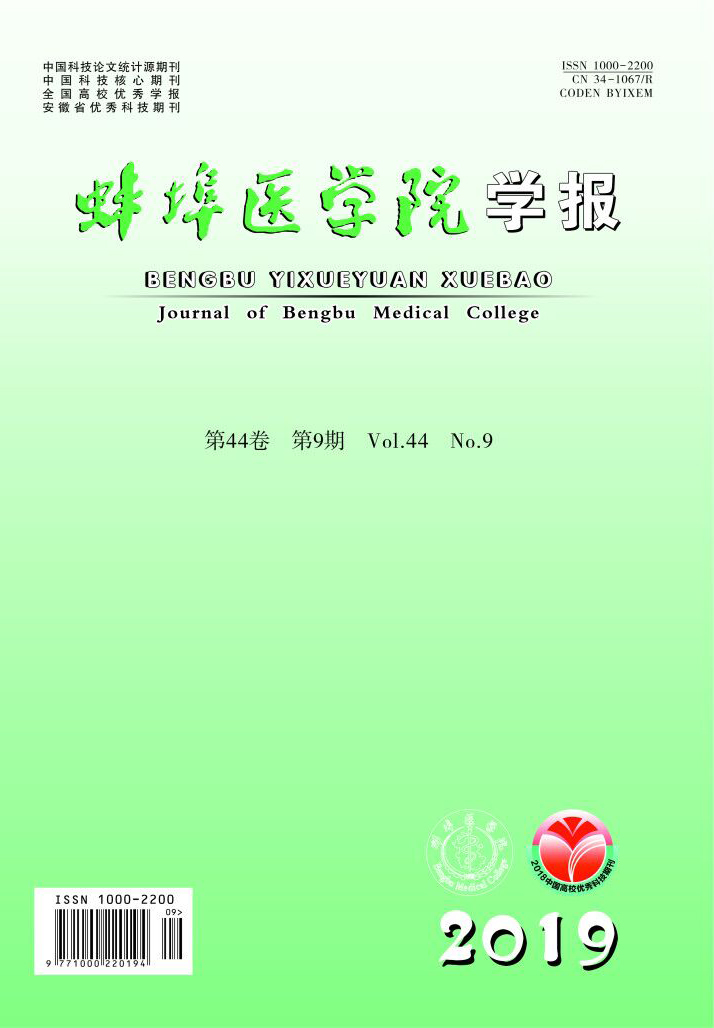-
腰椎管狭窄症(lumbar spinal stenosis, LSS)是临床常见的腰椎退行性疾病[1]。近年来,随着手术技术的不断发展,以及老龄化和肥胖人群的日益增多,LSS病人接受腰椎减压手术的比例不断上升[2-3]。手术减压后,虽然其短期改善率达到80%以上,但远期效果目前仍有争议,其成功率26%~100%[4]。甚至有学者[5]称,LSS病人行保守和手术治疗的疗效在4~5年后较为接近。有研究认为,病人术前活动水平是影响LSS病人行减压手术预后的一个重要因素[6],但目前少有研究涉及到术前户外活动所致影响。本研究收集了2015年2月至2017年6月行手术减压的99例LSS病人临床资料,观察其术前户外活动状态与术后3个月和12个月预后情况的相关性。现作报道。
HTML
-
选择2012年2月至2015年6月行腰椎减压手术治疗的LSS病人99例临床资料,其中男63例,女36例;年龄47~69岁;单节段手术31例,2节段42例,3节段18例,4节段6例。依据其术前的户外活动情况,将其分为2组:44例时常参加高强度或一般程度的户外活动,作为有户外活动组;55例为轻度户外活动或无活动的久坐状态,作为无户外活动组。统计2组病人的人口学资料,以及术后3个月和12个月随访期间的预后情况,并进行相关性分析。选择标准:病人有腰腿疼痛、间歇性跛行等典型症状,且经X线、CT等检查证实为腰椎管狭窄表现者;既往经3个月以上保守治疗无效,具备腰椎减压手术指征者;能准确提供术前的户外活动情况者;术后随访12个月以上,临床资料完整者。排除标准:非LSS病人;伴有腰椎骨折、感染或结核、肿瘤等其他疾病者;既往有腰椎外伤史或手术史者;术后存在意外伤或伴有其他相关疾病,以致对预后状态评估造成显著影响者。
-
本研究为一项回顾性观察队列研究,收集所有病人数据资料,旨在描述病人户外活动与减压手术预后的相关性。病人在术前基线时,通过其自我报告的术前户外活动情况,进行术前基线资料分组,并观察2组术后3、12个月的转归情况。以开展以下工作:(1)通过人口学资料的组间对比,观察术前有户外活动的LSS病人临床特征;(2)通过术后3、12个月的转归情况进行组间对比和多元回归分析,以明确术前户外活动水平对手术预后的预测价值。
-
纳入所有病人的术前人口学资料,包括年龄、性别、吸烟状况、糖尿病、抑郁症、体质量指数(BMI)和户外活动水平等;以及术后3个月和12个月的疗效指标数据,包括视觉模拟评分(VAS)、EuroQol健康指数量表(EQ-5D)[7]和Oswestry功能障碍指数(ODI)。
-
采用χ2检验、t检验、方差分析和q检验、多元线性回归分析。
1.1. 一般资料
1.2. 方法
1.3. 数据统计
1.4. 统计学方法
-
与有户外活动组相比,无户外活动组病人的每日吸烟率较高(P < 0.05),非胰岛素依赖型2型糖尿病比例相对较高(P < 0.05)(见表 1)。
人口学资料 有户外活动组(n=44) 无户外活动组(n=55) χ2 P 平均年龄/岁 63.71±13.65 59.79±12.89 1.46* >0.05 BMI/(kg/m2) 27.52±5.53 29.87±7.02 1.81* >0.05 性别 男女 32(72.73)12(27.27) 31(56.36)24(43.64) 2.82 >0.05 吸烟情况 每天 3(6.82) 15(27.27) 5.88 < 0.05 不清楚 0(0.00) 1(1.82) 不清楚 0(0.00) 0(0.00) 不吸烟 41(93.18) 39(70.91) 糖尿病 非胰岛素依赖型2型 1(2.27) 10(18.18) 6.85 < 0.05 胰岛素依赖型2型 1(2.27) 4(7.27) 胰岛素依赖型1型 0(0.00) 0(0.00) 无 42(95.45) 41(74.55) 抑郁 有 5(11.36) 12(21.82) 1.88 >0.05 无 39(88.64) 43(78.18) 户外活动情况 剧烈活动 10(22.73) 0(0.00) — — 一般活动 34(77.27) 0(0.00) 轻度或久坐 0(0.00) 20(36.36) 无户外活动 0(0.00) 35(63.64) 家庭活动情况 剧烈活动 3(6.82) 2(3.64) 28.17 < 0.01 一般活动 28(63.64) 8(14.55) 轻度或久坐 8(18.18) 30(54.55) 无家庭活动 5(11.36) 15(27.27) ASA分级 1 2(4.55) 1(1.82) 6.78 >0.05 2 16(36.36) 9(16.36)) 3 26(59.09) 44(80.00) 4 0(0.00) 1(1.82) 减压节段 1 17(38.64) 14(25.45) 2.17 >0.05 2 16(36.36) 26(47.27) 3 8(18.2) 12(21.82) 4 3(6.82) 3(5.45) 椎间融合 1 1(2.27) 4(7.27) 1.30 >0.05 2 2(4.55) 2(3.64) 3 0(0.00) 0(0.00) 4 0(0.00) 0(0.00) *示t值 -
术前:无户外活动组病人的腰痛VAS评分、ODI指数高于有户外活动组(P < 0.05和P < 0.01),EQ-5D评分低于有户外活动组(P < 0.01)。术后:99例中,有18例病人行微创手术,其中户外活动组6例,无户外活动组12例;其余病人均为常规减压手术。2组病人术后取得较好疗效(P < 0.01),但3个月时,无户外活动组腿痛VAS评分和ODI指数的改善程度均明显低于有户外活动组(P < 0.01);术后12个月时,2组上述指标的差异已无统计学意义(P>0.05)(见表 2)。2组病人的并发症发生率差异无统计学意义(P>0.05)(见表 3)。
疗效指标 有户外活动组(n=44) 无户外活动组(n=55) 平均差 t P 腰痛VAS评分/分 术前 6.20±2.77 7.40±2.03 1.20 2.40 < 0.05 术后3个月 2.06±2.03** 2.51±2.69** 0.45 0.92 >0.05 术后12个月 3.10±2.65** 2.74±3.00** 0.36 0.62 >0.05 F 32.54 61.71 — — — P < 0.01 < 0.01 — — — MS组内 6.272 6.786 — — — 腿痛VAS评分/分 术前 6.55±2.71 7.22±2.51 0.67 1.27 >0.05 术后3个月 1.45±1.85** 3.26±3.31** 1.80 3.44 < 0.01 术后12个月 2.52±2.55**△ 2.41±2.82** 0.11 0.20 >0.05 F 55.28 43.13 — — — P < 0.01 < 0.01 — — — MS组内 5.756 8.403 — — — EQ-5D总分/分 术前 0.62±0.20 0.46±0.23 0.16 3.64 < 0.01 术后3个月 0.81±0.20** 0.74±0.24** 0.06 1.55 >0.05 术后12个月 0.80±0.14** 0.77±0.24** 0.03 0.78 >0.05 F 15.15 28.69 — — — P < 0.01 < 0.01 — — — MS组内 0.033 0.056 — — — ODI总分/分 术前 35.55±13.50 51.35±14.14 15.80 5.63 < 0.01 术后3个月 14.18±11.58** 25.44±22.41** 11.26 3.23 < 0.01 术后12个月 16.84±15.84** 20.71±19.07** 3.87 1.08 >0.05 F 31.56 42.12 — — — P < 0.01 < 0.01 — — — MS组内 189.084 355.271 — — — 分组 n 开放手术 微创手术 并发症/[n;百分率(%)] χ2 P 有户外活动组 44 38 6 6(13.6) 无户外活动组 55 43 12 11(20.0) 0.70 >0.05 合计 99 81 18 17(17.17) -
患有抑郁症、BMI为25~29.9 kg/m2、BMI为30~34.9 kg/m2、BMI≥35 kg/m2的病人术前腰痛更严重(P < 0.05);有户外活动的病人术前功能障碍相对较轻(P < 0.01~P < 0.05),生活质量相对较高(P < 0.05)(见表 4)。术前有户外活动的LSS病人在减压手术后12个月时ODI改善更为明显(P < 0.05)(见表 5)。
变量 腰痛VAS 腿痛VAS ODI指数 EQ-5D评分 年龄/岁 40~ -0.194(1.370) -0.084(1.533) -4.439(8.252) 0.163(0.121) 50~ -1.632(1.283) -1.093(1.436) -8.545(7.728) 0.194(0.113) 60~ -0.409(1.288) -0.261(1.442) -5.506(7.762) 0.255(0.113)* 70~80 -1.520(1.308) 0.468(1.465) -11.522(7.881) 0.138(0.115) 男性 -0.540(0.609) -0.933(0.682) -1.195(3.667) -0.002(0.054) 吸烟情况 每天 0.601(0.680) 0.913(0.762) 7.487(4.099) -0.104(0.060) 偶尔 -2.705(2.532) -0.197(2.835) -26.158(15.254) -0.033(0.223) 2型糖尿病 胰岛素依赖型 2.412(1.105)* 2.441(1.237) 11.312(6.656)* -0.266(0.097)** 非胰岛素依赖型 1.179(0.910) 1.339(1.019) 4.313(5.484) -0.050(0.080) 抑郁 1.782(0.746)* 1.427(0.835) 3.502(4.494) -0.115(0.066) BMI/(kg/m2) 20~ 2.382(1.468) -0.352(1.644) 2.417(8.845) 0.120(0.129) 25~ 3.583(1.438)* -0.454(1.610) 9.771(8.666) 0.147(0.127) 30~ 3.847(1.555)* 0.464(1.741) 12.102(9.367) 0.024(0.137) ≥35 4.448(1.586)** 0.409(1.776) 16.021(9.555) 0.037(0.140) 户外活动 -0.242(0.553) 0.333(0.620) -11.759(3.334)** 0.127(0.049) * Intercept值 4.306(1.962)* 7.228(2.196)** 45.747(11.818)** 0.250(0.173) Observations值 91 91 91 91 R2值 0.314 0.195 0.428 0.378 调整后的R2值 0.177 0.034 0.313 0.254 剩余SE; df=75 2.254 2.524 13.580 0.199 F; df=15, 75 2.293** 1.211 3.735** 3.039** *P < 0.05, ** P < 0.01 变量 腰痛VAS 腿痛VAS ODI指数 EQ-5D评分 年龄/岁 40~ -1.736(4.011) 1.625(4.269) -10.887(20.245) -0.409(0.264) 50~ -1.153(3.844) 2.037(4.092) -5.446(19.083) -0.150(0.253) 60~ 0.410(3.843) 2.478(4.100) -4.503(19.329) -0.337(0.253) 70~80 0.993(3.918) 4.284(4.169) -4.149(19.663) -0.189(0.258) 男性 -1.614(1.191) -1.461(1.269) -2.803(6.079) 0.038(0.078) 每天吸烟 1.914(1.258) 1.108(1.343) 0.510(6.418) 0.076(0.083) 2型糖尿病 胰岛素依赖型 -0.798(2.307) 0.207(2.455) -4.057(11.506) 0.093(0.152) 非胰岛素依赖型 -0.871(1.693) 0.209(1.808) 4.351(8.641) -0.092(0.111) 抑郁 -0.468(1.513) -0.053(1.611) -14.011(7.721) 0.007(0.100) BMI/(kg/m2) 20~ -0.181(2.880) -4.550(3.065) -8.530(14.678) -0.202(0.190) 25~ 3.217(2.836) -3.659(3.018) -4.989(14.450) -0.315(0.187) 30~ 3.416(3.081) -2.572(3.293) -3.271(15.665) -0.076(0.203) ≥35 4.947(3.324) -3.406(3.537) -5.564(16.412) -0.265(0.219) 户外活动 -0.910(1.052) -0.299(1.138) -12.180(5.355)* -0.127(0.069) Intercept值 2.577(4.864) 6.166(5.181) 44.547(24.368) 0.754(0.320)* Observations值 58 57 59 58 R2 0.303 0.188 0.225 0.342 调整后的R2 0.076 -0.082 -0.022 0.128 剩余SE 3.369;df=43 3.585, df=42 17.193, df=44 0.222, df=43 F 1.333;df=14, 43 0.696;df=14, 42 0.913;df=14, 44 1.596;df=14, 43 *P < 0.05
2.1. 人口学资料分析
2.2. 手术疗效及并发症比较
2.3. LSS病人疗效的多重变量分析
-
本文通过回顾性研究,试图确定与LSS病人减压手术预后的术前相关因素。在以往,已有学者开展了类似方向的研究工作[8],但其结论有较大争议。部分学者认为,术前腰椎管狭窄程度可能与减压手术的预后相关;但亦有学者指出,狭窄程度与其术后的功能改善、疼痛和术后行走状态之间,均没有明确相关性[9-10]。有研究表明,肥胖(BMI>30 kg/m2)对LSS病人行腰椎减压手术的疗效有明确影响[11];然而近期研究则指出,肥胖虽然在短期内(3个月)对疗效有所影响,但肥胖和非肥胖病人在术后1年的疗效并无明显差异[12]。关于术前存在糖尿病、吸烟、抑郁和其他合并症等因素的影响,不少研究均指出,术前功能状态较好的LSS病人在减压术后可取得更好的疗效[13-14]。虽然既往已有相关研究涉及到病人术前的功能状态分析,但目前尚少有文献证实LSS病人术后疗效与术前的户外活动水平有关[15],而本研究在一定程度上弥补了这项空白。
在本研究中,2组LSS病人在手术后3个月和12个月的腰腿痛VAS评分、ODI指数和EQ-5D评分均得到明显改善。但表 2可见,无户外活动组在术前存在更严重的腰痛和功能障碍,生活质量也明显偏低;术后3个月时,无户外活动组的腿痛VAS评分和ODI指数改善效果均明显差于有户外活动组(P < 0.05), 组间差异在术后12个月时已无统计学意义。该结果与ELSAYED等[12]的报告比较相似,在该研究中,伴有肥胖的LSS病人在术后初期改善较慢,但干预后12个月时达到了与无肥胖病人相似的效果。上述现象反映出:术前功能状态较差的病人术后恢复时间亦较长,因而在考虑行腰椎减压手术时,对病人的选择、术前咨询、疗效预估方面,均要考虑到这一点。此外,表 1的统计数据显示,无户外活动的LSS病人有吸烟和/或患糖尿病倾向。既往已有研究证实,上述因素对腰椎病理方面存在明显影响。例如,吸烟已被证明会导致椎间盘退变率升高,并且会降低腰椎融合手术后的成功融合率[15];而糖尿病则可能会增加术后并发症的发生率[16]。在本文的多变量分析中,当调整糖尿病和吸烟状况等协变量时,表 5可见,户外活动水平是唯一与减压术后12个月ODI评分显著改善相关的变量。结果表明,术前户外活动程度较高者,其术前和术后因LSS而致功能障碍的可能性较小。
本研究的局限性在于,未能排除病人基础疾病、手术医生的水平、椎管狭窄程度、狭窄位置和手术方法等情况所致的影响,上述混杂因素可能会对研究结果造成一定的干扰。






 DownLoad:
DownLoad: